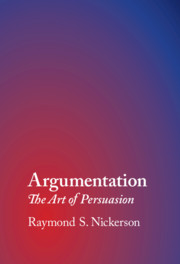Book contents
- Argumentation
- Books by the Author
- Argumentation
- Copyright page
- Dedication
- Contents
- Figures
- Tables
- Preface
- 1 Argumentation
- 2 Types of Argument
- 3 Evaluating Arguments
- 4 Persuasiveness
- 5 Plausibility
- 6 Fallacies
- 7 Biases, Misconceptions, and the Like
- 8 Other Flaws and Foibles
- 9 Stratagems
- 10 Improving Argumentation
- Book part
- References
- Name Index
- General Index
5 - Plausibility
Published online by Cambridge University Press: 27 November 2020
- Argumentation
- Books by the Author
- Argumentation
- Copyright page
- Dedication
- Contents
- Figures
- Tables
- Preface
- 1 Argumentation
- 2 Types of Argument
- 3 Evaluating Arguments
- 4 Persuasiveness
- 5 Plausibility
- 6 Fallacies
- 7 Biases, Misconceptions, and the Like
- 8 Other Flaws and Foibles
- 9 Stratagems
- 10 Improving Argumentation
- Book part
- References
- Name Index
- General Index
Summary
What makes a claim (premise of an argument) plausible? Knowledge and metaknowledge. Believed/assumed relationship and perceived strength of the relationship between antecedent and consequent. Awareness of alternative causes or preventatives. Unawareness of counterexamples. Believed credibility and believed intention of source. Framing effects. Diversity of evidentiary support. Emotions, preferences, and other variables. Global fit. Plausibility theory.
- Type
- Chapter
- Information
- ArgumentationThe Art of Persuasion, pp. 135 - 163Publisher: Cambridge University PressPrint publication year: 2020

